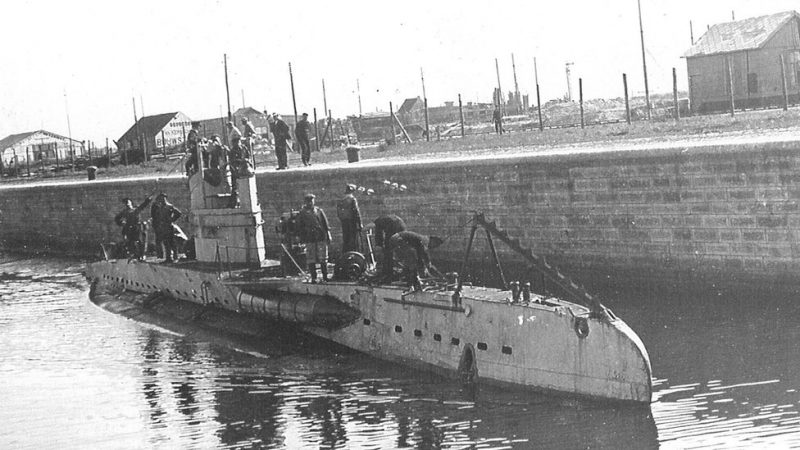Belgian researchers have made a startling discovery: a World War I-era German submarine just off the coast of West Flanders.
What makes this discovery unique is that the German U-Boat looks almost intact, even though it has spent more than a century on the bottom of the North Sea, the Governor of West Flanders, Carl Decaluwe, told the Associated Press. Also important is that Belgian officials report that the U-Boat contains the bodies of 23 crew members.
“It’s quite amazing that we found something like this,” said Governor Decaluwe in late September 2017. “The impact damage was at the front, but the submarine remains closed and there are 23 people still onboard.”
The damage indicates that the submarine most probably suffered a blow from an underwater mine, which was the most common weapon during the unrestricted submarine-warfare period that lasted through much of the Great War.
During the time, Allied cargo ships and other vessels were indeed easy prey for the submerged predators lurking in the depths of the English Channel. The Belgian coastal town of Bruges served as their main base, so this is where the seamen were probably stationed.
It was subsequently discovered that, apart from the deformed front, two torpedo tubes also suffered substantial damage.
The submarine in question is an 88-foot-long UB type II vessel, which was first commissioned in 1915. It was an upgraded version of its predecessor, the UB type I class submarine, which it exceeded in both size and effectiveness.
The total number of produced units was 30, while, chillingly, the total number of sunk vessels was 20.
The UB type II could reach a 163-foot maximum depth, with a 30 to 45 second diving time. It might not seem like much from a present-day perspective, but these were the pioneering days of underwater warfare and the UB type II represented cutting-edge technology in the field. Not to mention, it prompted fear across the English Channel, going a ways toward isolating the British Isles from Continental Europe.
Belgian ports stationed 93 submarines of all types during the war, ones that went on to sink more than 2,500 Allied ships, at a price of 70 total U-Boats lost, and 1,200 sailors who met their demise in the cold grip of the sea.

During the war, there were 18 submarines stationed with the Flanders Flotilla, from which 13 were sunk in a period stretching between 1915 and 1918 when the war ended. The latest discovered U-Boat is the 11th out of 13 that have been sunk off the coast of West Flanders.
It is clear that the coast of Belgium saw much activity during World War I, meaning such discoveries don’t come as a complete surprise. Still, a piece of history, preserved like this, is priceless. According to Reuters, West Flanders officials have stated that out “of the 11 downed U-Boats in Belgian waters, this one is the best-preserved example.”
The Associated Press published a video of the wreckage, covered with seaweed and barnacles, indicating that it has remained untouched from the day it sank. There are also traces of nets and fishing gear that attached to it as the years went by.
To protect the submarine from potential looters and curious enthusiasts, the Belgian officials refused to give the exact location of the discovery, but that too will be known soon, for already there are measures being taken in order to protect the location. As Reuters reports, options are being looked into, such as whether the found wreckage could be considered a heritage site.
There is also the question of repatriation of the fallen sailors, which is yet to be resolved. According to the AP, Governor Decaluwe has already reached out to German officials, who are dealing with the issue.
